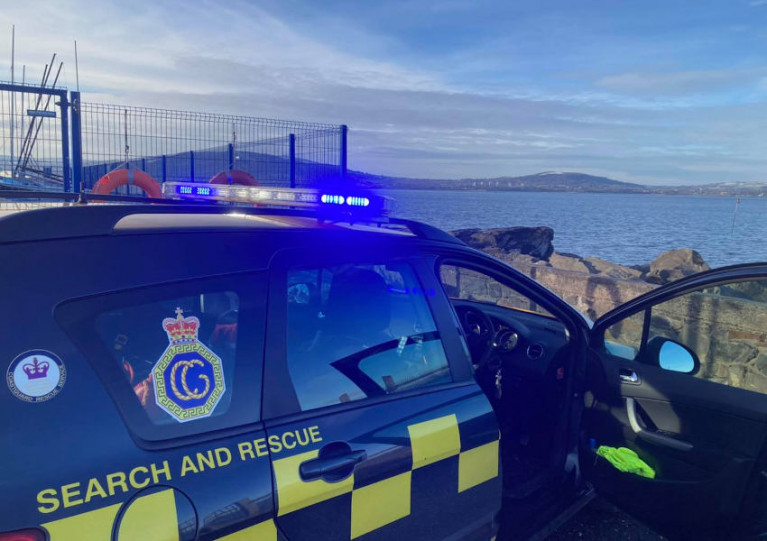Displaying items by tag: Bangor Coastguard
Busy Weekend for Bangor Coastguard Rescue Team
It was multi shout four days for Bangor Coastguard Rescue Team on Belfast Lough when they covered calls some of which resulted in rescue action.
On Thursday (20th) the team attended a yacht offshore reported to have a broken mast and no sign of anyone on board. Thankfully, it was found that the vessel was moored, and no further action was required. Then on Friday (21st), there was a report of an unmanned paddleboard in the Ballyholme Bay area, but it was discovered that it belonged to a BYC member and had blown into the water in the high winds.
 The vessel towed to Bangor Marina
The vessel towed to Bangor Marina
On the Saturday, the team answered a call about possible ordnance near Crawfordsburn Beach east of Bangor on the Belfast Lough coast. Again, there was no danger as it turned out to be a rusted fire extinguisher.
Yesterday (Sunday 23rd), Bangor Lifeboat towed a small broken-down vessel from near the Copeland Island off Donaghadee on the Down coast to Bangor Marina. They headed to Bangor, shadowed by the Coastguard. From the beach at Ballyholme, one of the CRT team spotted what looked like an upturned paddleboard in the water, and the Lifeboat was requested to drop the tow and make best speed to the area. They located the object, and thankfully on this occasion, it was driftwood. The Lifeboat re-established the tow back to the marina, where they were met by Coastguard personnel.
Two Call Outs for Bangor Coastguard
The last two days in March were busy for Bangor Coastguard Rescue Team with incidents on Tuesday 30th and Wednesday 31st March in Strangford Lough.
On Tuesday the team responded to a report of a person in the water near the Flood Gates (sometimes called the Tidebank) near Newtownards, at the northern end of the Lough.
The embankment was built in 1811 by Lord Londonderry of Mount Stewart and reclaimed 200 acres of land from the seashore. The area was turned into arable farmland and the bank is a popular elevated 3.3 km linear walking route.
Windsurfer in difficulty
When the team arrived, they found a windsurfer in difficulty and Portaferry Lifeboat was tasked but due to the state of the tide was unable to assist. So the Rescue Team kitted up in water rescue PPE and helped the surfer, who didn't need medical attention, ashore.
Portaferry CRT and the Police Service were also in attendance.
Yesterday (Wednesday) an adult and two children were cut off by the tide at Island Hill on the northwest side of the Lough near Comber.
Actually called Rough Island on which there used to be a farm, the popular small island is reached by a causeway only useable at low tide. It is a popular spot for birdwatching.
As Coastguards kitted up in water rescue PPE to assist the casualties, Paddleboarders in the area came to the rescue by bringing the casualties ashore on their boards.
Coastguard Issues Warning After Surfer Close to Belfast Lough Ferry Prompts Rescue Attempt
Bangor Coastguard has issued a warning after a surfer was spotted close to an inbound Stena ferry in Belfast Lough on Monday (25 January) as Afloat reported earlier here.
As the Belfast Telegraph reports, a team from Bangor Coastguard kept an eye on the surfer as he paddled off Holywood in Co Down and made it back to shore.
“After speaking with the casualty it was confirmed he was intending to surf the wash from the superfast inbound to Belfast,” Bangor Coastguard said — adding that the surfer was reminded of “the dangers of being close to such large vessels”.
The Belfast Telegraph has more on the story HERE.






























































